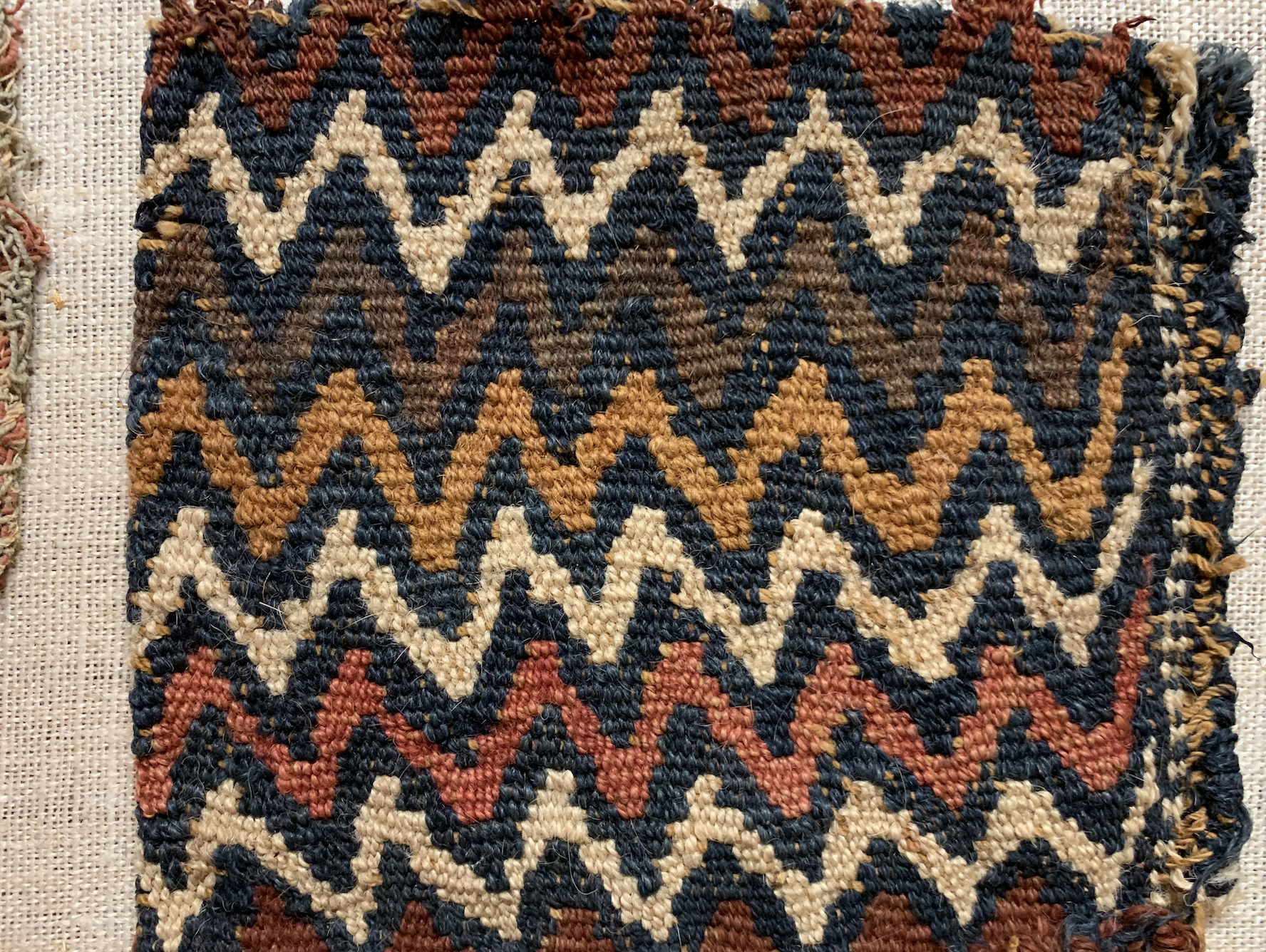Andean Woven Coca Bags
These intricately woven bags hold a special significance in Andean culture, both in the past and present. They are traditionally called Chuspas, but widely known as Coca bags because of their use. Coca bags existed in ancient Andean societies to carry leaves from the coca plant, which were used for medicinal and ritualistic purposes. They continue to be significant in contemporary Andean communities for similar functions. While these bags were used before and during the rise of the Inca Empire, scholars know little about pre-Inca societies due to the lack of an established word-based writing system. We know most about the Inca because the Spanish invaded in 1532 at the height of the Inca Empire; they recorded their perspective of society. The Spanish widely debated the use of coca leaves and ultimately exploited the leaves as a lucrative business in the "New World." However, they continue to maintain their cultural significance and attachment to contemporary Andeans today.
Coca leaves are the typical contents of these bags; they are harvested in tropical regions of the lowland Andean mountain valleys. While it is true the alkaloid found in coca leaves is the same producing cocaine, the leaves are mild in comparison. They relieve hunger, thirst, and fatigue and can be compared to drinking a cup of espresso. Leaves were reserved for elite consumption, ceremonial rituals, including spiritual and domestic activities, and consolidating alliances within the state.



The organized Inca state relied on the regulation of textiles as a critical aspect of the economy, religion, and imperial ideology. They used textiles and fiber as a means of communication through structure and iconography. While clothing is often a means of expressing these status symbols, coca bags were also critically important for communicating messages. Within the Inca Empire, the bags were reserved for members of the elite. At the same time, specific patterns, fibers, and styles indicated the status and profession of the person wearing it. For example, an additional fringe added to the bottom of the back marked higher status, such as royalty.
Coca bags are still used in Andean culture today! On the Bolivian valleys of Lake Titicaca live the Callahuaya. They are indigenous herbalists, naturalists, and magical healers who travel throughout Argentina, Bolivia, Northern Chile, and Peru. Their Chuspas, or coca bags, are woven by their wives and constructed with traditional techniques and materials, including camelid fibers and dyes from local plants and insects. Like those of the ancient Andeans, the structure and designs communicate messages about the owner, namely their rank and experience as a Callahuaya healer. However, the contents include more than coca leaves, extending to an assortment of tools and medicinal objects. Their ceremonial language is said to be learned from the ancient Inca emperors.
Coca leaves are a cultural symbol of Andean society. They are continued to be treated as an integral part of daily economic, religious, political, and medical life. In the majority of the 3,100 recognized Andean common communities in Peru, the "sacred leaf" actively participates in simple daily and ceremonial activities similar to those of the ancient Andeans. The leaf maintains its protective, spiritual, medicinal, and sacred qualities, assuming fertility, security, and well-being to those using it into the 21st century.
Blog by Jazlyn Sanderson
References:
Stewart, Donna E. “Medicos viajeros Boliviaros.” Canadian Medical Association Journal 178, no. 5 (2008): 602.
Hughes, Lauren Finley. "Weaving Imperial Ideas: Iconography and Ideology of the Inca Coca Bag." Textile: The Journal of Cloth & Culture 8, no. 2 (2010): 148-179.
Gelles, Paul. "Coca and Andean Culture – The New Dangers of an Old Debate." Cultural Survival Quarterly (1981-1989); Cambridge 9, no. 4 (1985).


